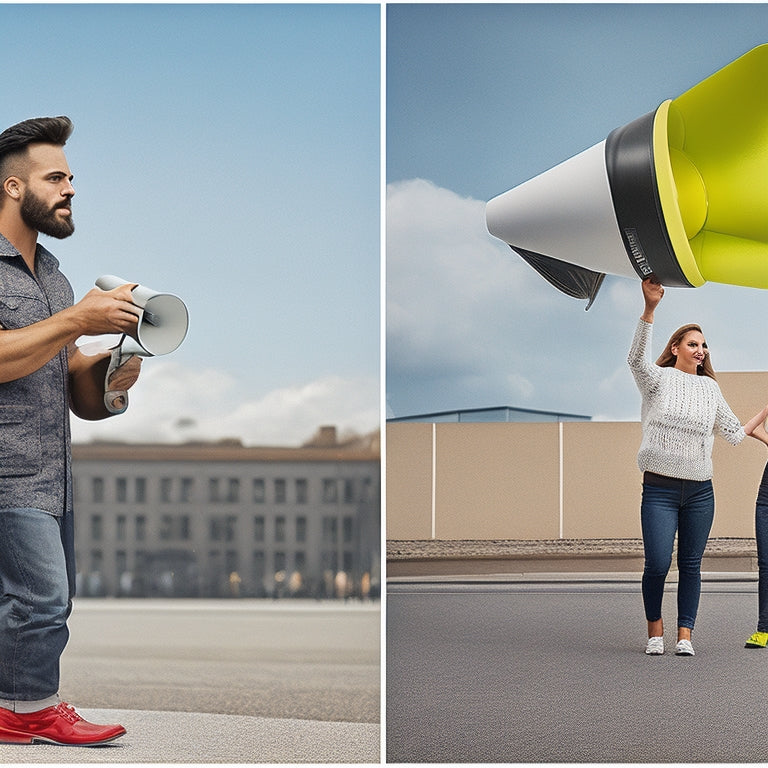
Influencer Marketing: From Mega to Nano Power
Share
You're about to tap into the rapidly evolving influencer marketing landscape, where the industry is projected to grow from $4.6 billion in 2018 to $21.1 billion by 2023, driven by the impact of social media influencers on brand growth. As you navigate this space, you'll encounter mega-influencers with massive followings but lower engagement rates, and nano-influencers offering hyper-localized influence and genuine recommendations. To maximize ROI, it's essential to understand the strengths and weaknesses of each influencer type and diversify your strategy accordingly. Now, discover how to harness the power of each influencer type to achieve your marketing goals.
Key Takeaways
• Influencer marketing is projected to grow from $4.6 billion in 2018 to $21.1 billion by 2023, driven by social media influencers' impact on brand growth.
• Diversifying with a mix of mega, macro, micro, and nano-influencers can maximize ROI, as each type caters to specific marketing needs and target audiences.
• Mega-influencers are ideal for broad brand awareness, while micro and nano-influencers offer higher engagement rates and niche expertise, making them suitable for targeted campaigns.
• When choosing an influencer, consider factors such as authenticity, reach, engagement rates, niche focus, and cost to align with brand goals and target audience.
• A successful influencer marketing strategy involves understanding the strengths and weaknesses of each influencer type and leveraging their unique advantages to achieve optimal results.
Types of Social Media Influencers
When crafting an influencer marketing strategy, it's essential to understand the different types of social media influencers, such as mega-influencers, macro-influencers, micro-influencers, and nano-influencers, each with their unique characteristics, strengths, and weaknesses.
You'll want to take into account factors like influencer engagement and follower authenticity when selecting the right influencer for your brand. Mega-influencers have massive followings, but may lack engagement, while micro-influencers have higher engagement rates and are viewed as authentic and trustworthy.
Nano-influencers, with their hyper-localized influence, offer genuine recommendations and reviews. By understanding the strengths and weaknesses of each type, you can create a strategy that effectively reaches and engages your target audience.
Influencer Marketing Market Growth
Staying informed about the industry's rapid growth is crucial for your brand's influencer marketing strategy, given the projected surge in market size from $4.6 billion in 2018 to a staggering $21.1 billion by 2023.
This significant increase is fueled by the impact of social media influencers on brand growth. As you navigate the influencer marketing landscape, keeping abreast of the latest trends and market analysis is vital.
Mega-influencers command high fees, while micro and nano-influencers show higher engagement rates. To maximize your ROI, consider diversifying your strategy with a mix of influencer types.
Choosing the Right Influencer Type
To develop a successful influencer marketing strategy, you need to pinpoint the right influencer type that aligns with your brand's goals, target audience, and product/service offerings. This is essential because different influencer types cater to specific marketing needs.
For instance, if you're looking for broad brand awareness, a mega-influencer might be the way to go. However, if you want targeted campaigns with high engagement rates, consider micro or nano-influencers.
Here are some factors to take into account when choosing an influencer type:
- Influencer authenticity: Does the influencer genuinely use or believe in your product/service?
- Reach and audience size: How many people will your message reach?
- Engagement rates: How interactive is the influencer with their followers?
- Niche focus: Does the influencer specialize in your industry or target market?
- Cost: What's your budget for influencer partnerships?
Mega-Influencer Marketing Strategies
By partnering with mega-influencers, brands can tap into their massive followings and achieve widespread brand awareness, but it's important to carefully consider the hefty price tag and potential trade-offs in engagement rates. You'll need to weigh the benefits of increased visibility against the costs of lower engagement rates.
| Marketing Goal | Influencer Partnership | Marketing Tactic |
|---|---|---|
| Brand Awareness | Celebrity Endorsements | TV Commercials |
| Product Launch | Mega-Influencer Collaborations | Social Media Campaigns |
| Reach Expansion | Macro-Influencer Partnerships | Sponsored Content |
To maximize ROI, you should focus on influencer partnerships that align with your marketing goals. For example, if you're looking to increase brand awareness, a celebrity endorsement might be the way to go. However, if you're launching a new product, a mega-influencer collaboration could be more effective.
The Rise of Micro-Influencers
Their niche expertise and highly engaged followers have made micro-influencers an attractive alternative to their more popular counterparts, offering brands a more targeted and cost-effective way to reach their desired audience. By partnering with micro-influencers, you can tap into their highly engaged audience and leverage their credibility to promote your products.
Here are some benefits of micro-influencer collaborations:
-
Niche market targeting: Micro-influencers focus on specific topics, allowing you to target your desired audience with precision.
-
Authenticity advantages: Micro-influencers are seen as authentic and trustworthy by their followers, increasing the likelihood of conversions.
-
High engagement rates: Micro-influencers have high engagement rates, ensuring your brand message is seen and heard.
-
Cost-effective: Partnering with micro-influencers is often more cost-effective than working with larger influencers.
-
Flexible engagement strategies: Micro-influencers can adapt to different engagement strategies, from sponsored content to product reviews.
Harnessing Nano-Influencer Power
With fewer than 1,000 followers, nano-influencers may seem insignificant, but they wield considerable power in their hyper-localized domains, offering brands an unparalleled level of authenticity and engagement. By leveraging their hyper-localized influence, you can tap into a highly targeted and engaged audience.
| Nano-Influencer Benefits | Brand Advantages |
|---|---|
| High Engagement Rates | Increased Conversion Rates |
| Authenticity in Recommendations | Enhanced Brand Credibility |
| Real-Life Relationships with Followers | Deeper Customer Connections |
| Unparalleled Level of Authenticity | Improved Brand Perception |
As a brand, you can harness the power of nano-influencers to create authentic and engaging campaigns that resonate with your target audience. By partnering with nano-influencers, you can build trust, drive conversions, and create a loyal customer base.
Effective Influencer Collaboration
To forge a successful partnership, you need to clearly define your collaboration goals and objectives, guaranteeing that both parties are aligned and working towards a common purpose. This clarity will help you identify the right influencer for your brand, one who shares your values and resonates with your target audience.
When collaborating with influencers, keep the following key considerations in mind:
- Guarantee influencer authenticity by choosing those who genuinely use or believe in your product/service.
- Clearly communicate your brand's message and expectations.
- Set specific metrics for measuring campaign success.
- Encourage niche audience engagement through targeted content.
- Establish open and transparent communication channels throughout the partnership.
Frequently Asked Questions
How Do I Measure the Success of an Influencer Marketing Campaign?
You measure the success of an influencer marketing campaign by tracking engagement metrics like comments, likes, and saves, and calculating the campaign ROI to guarantee a tangible return on your investment.
Can I Use Influencers for B2B Marketing and Advertising?
You can leverage influencers for B2B marketing and advertising by partnering with industry experts who have a strong following among your target audience, implementing strategies that showcase thought leadership and expertise.
Do Influencers Need to Use a Specific Hashtag for Brand Tracking?
Coincidentally, you're wondering if influencers need a specific hashtag for brand tracking, and the answer is yes! Utilizing a branded hashtag guarantees authenticity and tracking transparency, enabling you to monitor the campaign's success and ROI effectively.
How Do I Find Influencers Who Align With My Brand Values?
You identify influencers who align with your brand values by conducting thorough brand research, looking for ideal ambassadors who share your mission and target audience, and analyzing their content for consistency and authenticity.
Can I Request Influencers to Remove Sponsored Content After a Campaign?
You can request influencers to remove sponsored content after a campaign, but be aware that content ownership and post-mortem analysis may be impacted, potentially affecting future collaborations and brand reputation.
Related Posts
-

Revolutionize Your Kitchen Storage With These Ideas
You're ready to revolutionize your kitchen storage! Start by incorporating ladder-accessible shelves and utilizing cl...
-

Revolutionize Your Kitchen With Sink Upgrades
Revamp your kitchen by enhancing your sink with thoughtfully chosen accessories, transforming it into a multitasking ...

